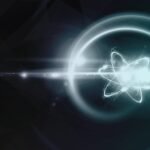
The US is showing increasing interest in using nuclear energy in orbit. Now, the US military has announced that it plans to put several nuclear propulsion and power plant systems into orbit around our planet by 2027 at the latest.
The so-called Defense Innovation Unit (DIU) is a division of the US Department of Defense that aims to quickly make emerging technologies useful for the armed forces. Observers describe the department, founded in 2015, as a “Pentagon experiment” with the aim of bundling the innovative power in one unit. The DIU has since announced that two contracts have been awarded for the development of prototypes. The goal: “Demonstrate the next generation of nuclear propulsion and power options for spacecraft.”
were commanded loudly Report by Space.com the two US companies Ultra Safe Nuclear and Avalanche Energy. The assignment: The DIU wants to test “small spacecraft” in the so-called cislunar space, ie the space within the lunar orbit, which is equipped with nuclear propulsion and energy systems. The publication does not show how much the department is investing in this, which makes it difficult to estimate the actual size of the projects for the time being.
Ultra Safe Nuclear calls his project EmberCore, behind which lies the idea of a rechargeable radioisotope battery that can be used for propulsion and power supply. Compared to the previously tested plutonium systems, it should be possible to achieve ten times the performance here. “A few kilograms of fuel will provide more than 1 million kilowatt-hours (kWh) of energy,” explains the DIU. Avalanche Energy plans an even more adventurous project with Orbitron.
For example, the first step is to capture fusion ions in electrostatic fields. A microwave should then make it possible to keep the electrons closer to the nuclei. “The resulting fusion combustion then produces the energetic particles that produce heat or electricity that can power a highly efficient propulsion system.”
Digital marketing enthusiast and industry professional in Digital technologies, Technology News, Mobile phones, software, gadgets with vast experience in the tech industry, I have a keen interest in technology, News breaking.